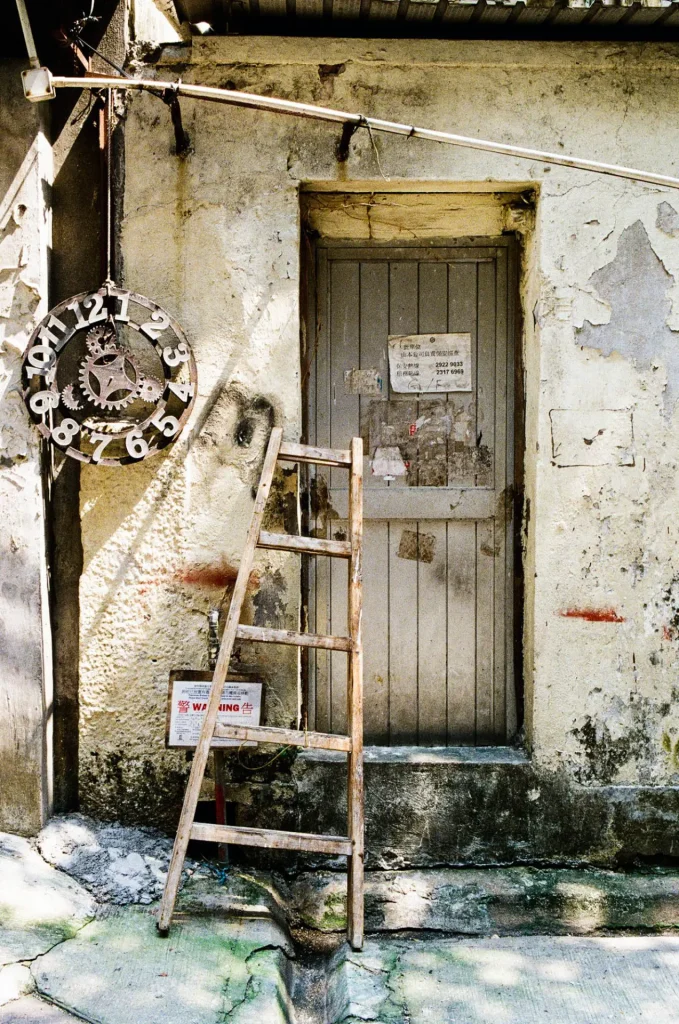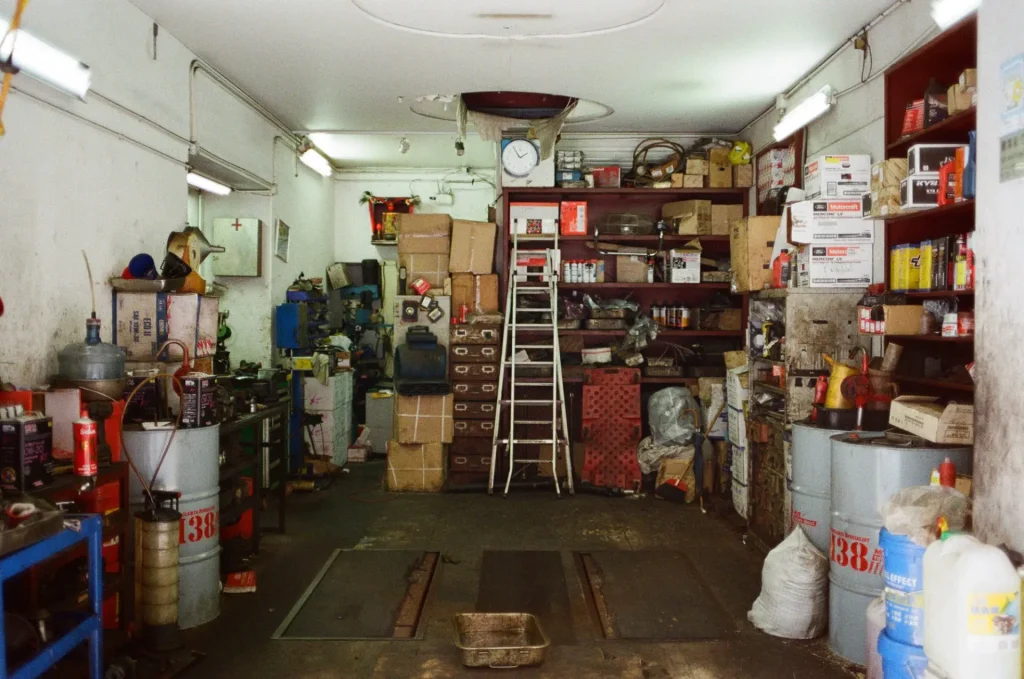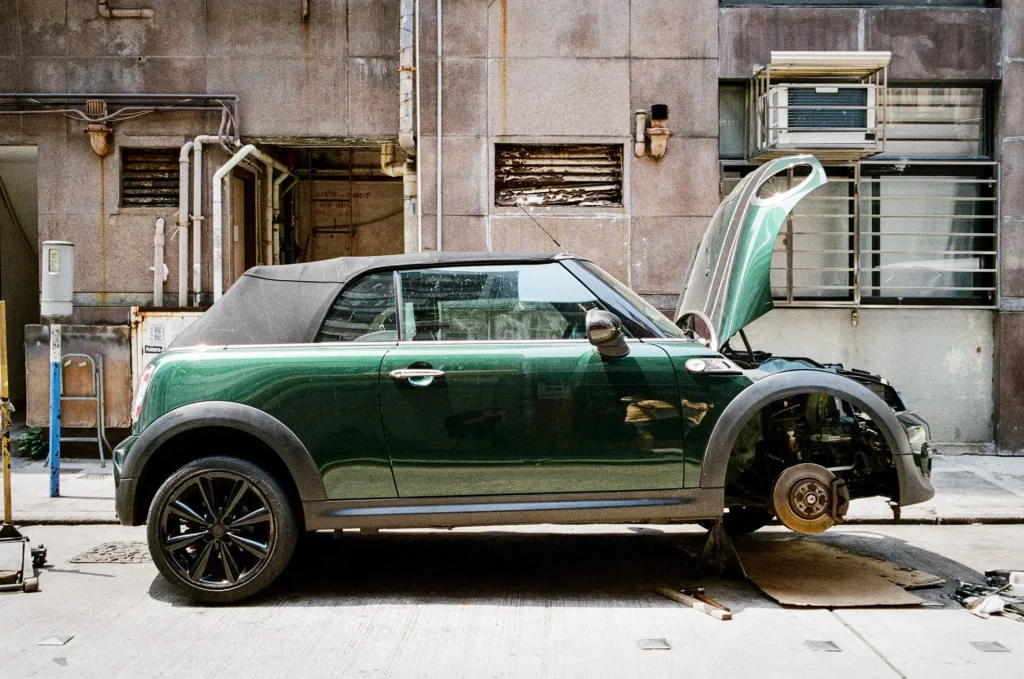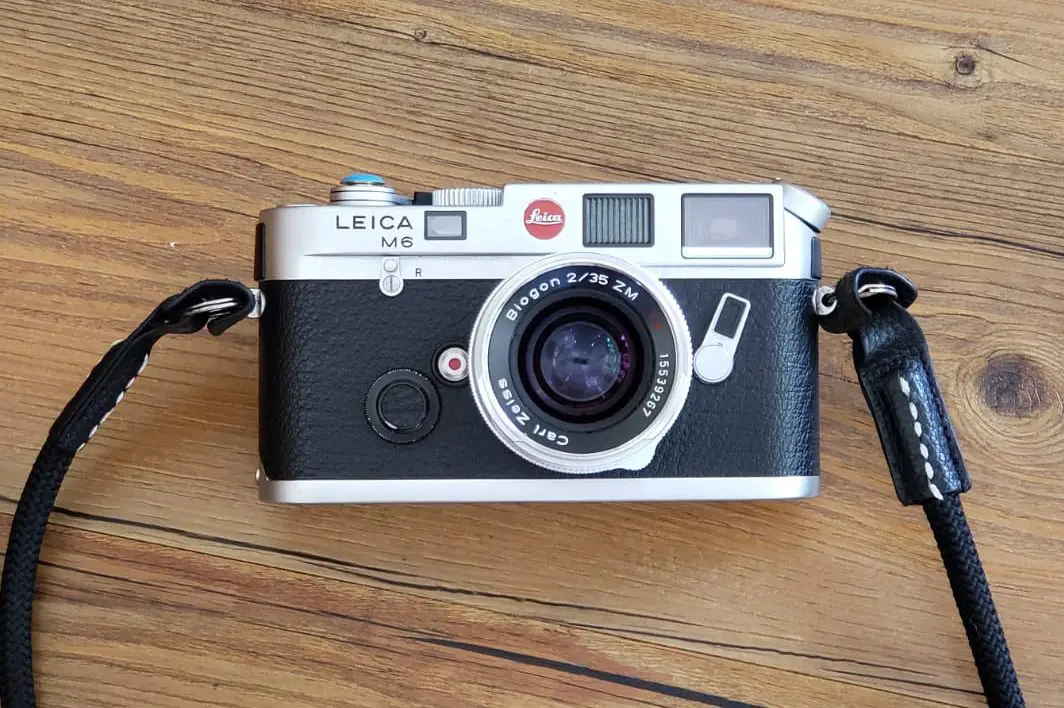I’d heard about Leicas even before I started to get serious about photography let alone film photography. But I’d never held one in my hands, and never shot one until a few months ago. My friend Matthew, who is a bit of a Leica enthusiast, offered to lend one to me so I could get a feel for it.
We agreed to meet in Tai Hang on a sunny early afternoon so the sunlight would still shine on the narrow streets and alleys. I packed a few rolls of film, and decided to give the Kodak Ultramax 400 a try. I never purchased Kodak Ultramax, but I was offered three rolls by Kodak after participating and getting an honorable mention in a competition they ran late last year with the Phlogger podcast.
The Leica Matthew brought for me is a Leica M6, and the lens he had equipped on it is a Carl Zeiss biogon 35mm f/2 ZM. These things (apart from 35mm and f/2) mean very little to me but I’m led to understand they matter to Leica enthusiasts.
I should stress that since the Xpan is my main film camera, I was happy and comfortable with the rangefinder side of the Leica. In fact, I found that the focusing ring was a lot faster and a lot easier to use than the ones on my xpan lenses. On the other hand, I’m used to shooting in Aperture priority mode most of the time, and occasionally compensate the exposure when I feel it’s necessary, so having to go (nearly) full manual was another kettle of fish.
I say nearly because the Leica M6 has a meter and you’re therefore not entirely on your own. The (limited) information you get is confusing however. I’ve used cameras with meters in the viewfinder in the past (starting with my first film camera, the Spotmatic F) but the information it gave you was on a scale. The M6 gives you partial information (ie. the LEDs don’t always show) and then only tells you if you should expose more or less. And the dials to adjust exposure (at least the speed dial) goes in the direction opposite to the arrows you’re shown.
Needless to say, I was (very) confused. I had never, I think, until that walk around Tai Hang, been so slow in shooting. I missed some scenes because I was fumbling around. Not an ideal experience although I can see how you’d get used to the information you get. It’s just a matter of rewiring your brain so some extent.







Ultimately, what I awaited anxiously were the pictures. The good news is that I messed up surprisingly few of them. I even got a couple of pictures I really like. Kodak Ultramax turned out to be a fun and poppy film stock, with a lot more brightness and colour than the Portra 400 or Fuji Pro 400H that I normally use when shooting colour. It’s definitely a film stock I’ll be using again, especially on partly cloudy days when muted colours can really make the pictures lackluster. I also found out that I quite liked 24 exposure rolls. Too often I tend to shoot crappy shots at the end of a roll just to get it over with. Less chance of that with 24 exposures.
Can I see a difference in picture quality between these and pictures from other cameras ? I think I can, at least with some cameras. Not sure I see a big difference with my Xpan shots, I definitely see a difference with my Minox shots (which is reassuring to some extent). Do I see a difference with my Canon A2 shots? Not sure to be honest.
I definitely did not get a “these pictures pop in a way I’ve never seen before” effect. Don’t get me wrong, I like the pictures a lot, but not to the point where I think I can see a Leica or Zeiss mark on them. I also did not find the handling of the camera to be all that natural and while I could imagine learning to use it properly, it’s surprising that ergonomy in a camera that expensive would be so… clunky, I guess?
Still, I can’t pretend it didn’t spark a little something in me. Not to the point of wanting a Leica right here right now. But it’s somewhere in the back of my mind, and I suspect I might take the plunge one day. I’m very glad (and grateful to Matthew) that I could try one for a few weeks. I shot three rolls altogether, three film stocks I’d never tried before (the other two were Ferrania P30 and Cinestill 50D). If you’re interested, I might talk about those later.
If you like my work and want to see more of it, follow me on Instagram at @benfelten.
Share this post:









Comments
Pete on 5 (7) Frames with a Leica M6, Zeiss 35mm f/2 and Kodak Ultramax 400 – A Double First – By Benoît Felten
Comment posted: 23/07/2020
Comment posted: 23/07/2020
Sroyon on 5 (7) Frames with a Leica M6, Zeiss 35mm f/2 and Kodak Ultramax 400 – A Double First – By Benoît Felten
Comment posted: 23/07/2020
Comment posted: 23/07/2020
Neilson on 5 (7) Frames with a Leica M6, Zeiss 35mm f/2 and Kodak Ultramax 400 – A Double First – By Benoît Felten
Comment posted: 25/07/2020
Comment posted: 25/07/2020
Huss on 5 (7) Frames with a Leica M6, Zeiss 35mm f/2 and Kodak Ultramax 400 – A Double First – By Benoît Felten
Comment posted: 28/07/2020
As far as metered info goes, I agree that Leica provides extremely limited manual metered information in all its M cameras - even the digital ones!
But for one... the glorious M5. It's kinda weird that the M5 provides more exposure information in the viewfinder than even the newest Leica M10R!!
For easiest/quickest shooting, the M7 is the best film Leica (AE exposure does that), then the M5, then the MP/M6, then the rest. Of course if you get proficient with no meter, you'll have your camera settings already, umm, set and any M can be really quick to use.
Comment posted: 28/07/2020